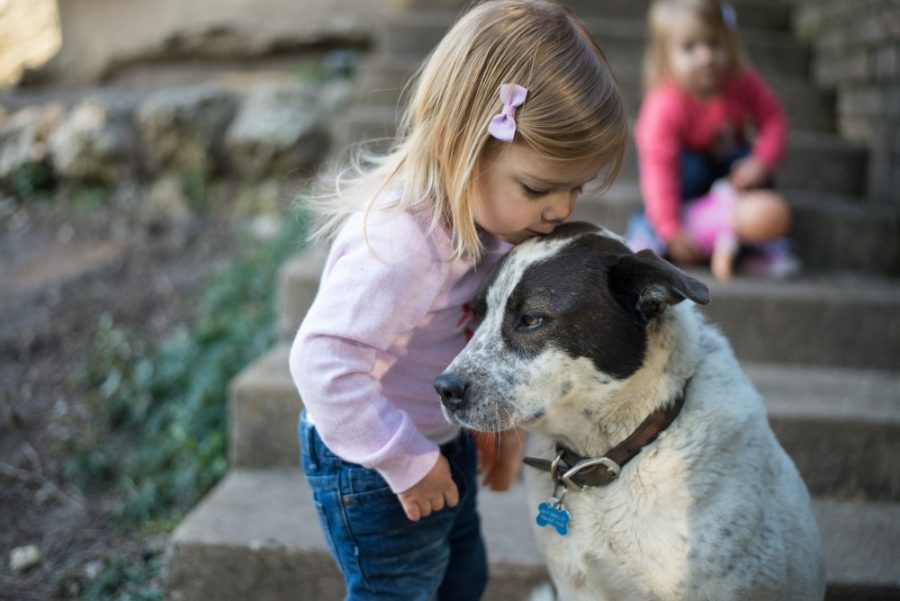Evan MacLean, director of the Arizona Canine Cognition Center and an assistant professor in the School of Anthropology, led a study that indicates human toddlers and dogs may exhibit similar levels of social intelligence.
MacLean and his team already understood there were a few similarities between toddlers and dogs, namely their ability to engage in “cooperative communication,” wherein individuals communicate using physical gestures to share information. Pointing is an often-used example.
“There have been a lot of questions about why this is, and if this is really a distinct kind of intelligence that is shared by both humans and dogs,” MacLean said.
Questions like this pushed MacLean to go deeper into the topic with his research.
“Our questions were about whether we see similar patterns of individual differences in dogs, human children and chimpanzees,” MacLean said.
A large battery test was administered to several hundred individuals of each species, comprised of comparable tasks that were specific to each species. The tests were game-like in nature and aimed to test a variety of different types of intelligence and thinking processes.
The tests revealed there are several layers of similarity between human children and dogs. While the first level was previously established with the idea that children and dogs perform better than chimpanzees at tasks related to cooperative communication, MacLean’s research uncovered a second, previously unexplored level.
“So, our study reveals a second level of similarity, in which the patterns of individual differences are very similar in dogs and children, but not chimpanzees,” MacLean said. “This suggests that there is a special form of social intelligence for dealing with cooperative communication that is highly similar between dogs and children, and not merely at a superficial level.”
RELATED: Canine cognition center explores dog smarts
Discoveries like this help researchers determine the different dimensions of intelligence and how they exist in different species. However, it also disrupts previous theories that believe humans and chimpanzees, along with other types of apes, were the most similar in cognition. Many experiments would turn to apes when researchers wanted to learn more about the human thought process.
There are several theories that attempt to explain the similarities between toddlers and dogs. One contested explanation is since dogs and babies are raised in the same type of environment, it would make sense for them to display similar social awareness and intelligence. This would mean that any species could then be raised in the same way and would demonstrate the social intelligence that dogs do. However, this is not the case, and MacLean believes that this theory can be disproved.
“Very young puppies with minimal human experience exhibit the same skills, and attempts to heavily socialize other species like chimpanzees don’t seem to lead to dog/human-like flexibility,” MacLean said. “Our hypothesis is that there were similar processes in human evolution and dog domestication, and both species independently evolved similar sets of social skills.”
These similarities could be an asset for research designed to benefit humans. Many types of research focus on using animals as models to explore how people would react to a medicine, food, treatment or the like. Therefore, it is important to find animals whose biology and psychology is similar to that of human beings in order to produce accurate results. Psychological models have been particularly difficult to find.
RELATED: Psychologists connect sleep to good learning in toddlers
However, MacLean’s research opens a door that may suggest that dogs can be used as a model for human psychology. They have demonstrated behavior and cognition that researchers would want to test for and examine in humans. This, however, only extends to certain traits, such as specific aspects of cognition and mental development.
“This research suggests that dogs might be an interesting species in which to try to understand the mechanisms underlying human cooperative communication, how they develop, and if they are impaired, why so,” MacLean said.
The research would also allow scientists to better understand how humans evolved, particularly in the social sphere.
Follow Nicole Morin on Twitter.









